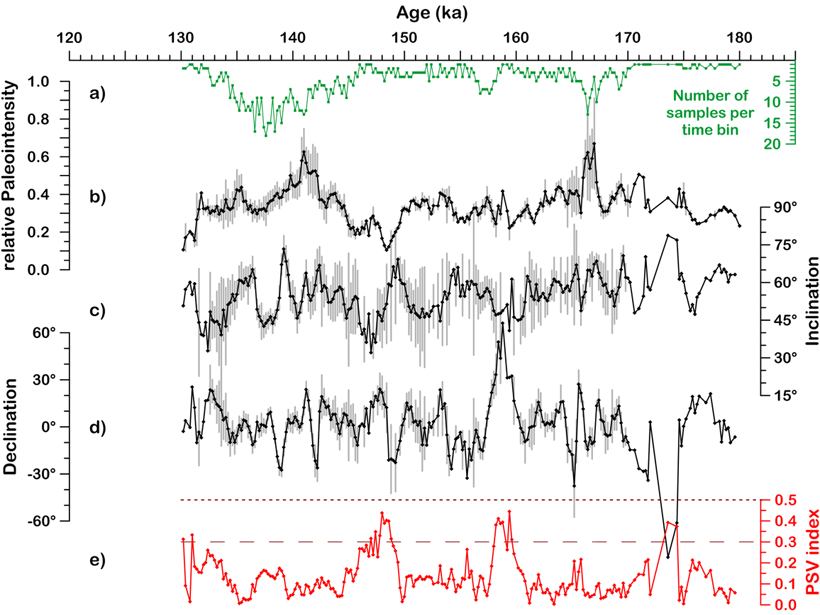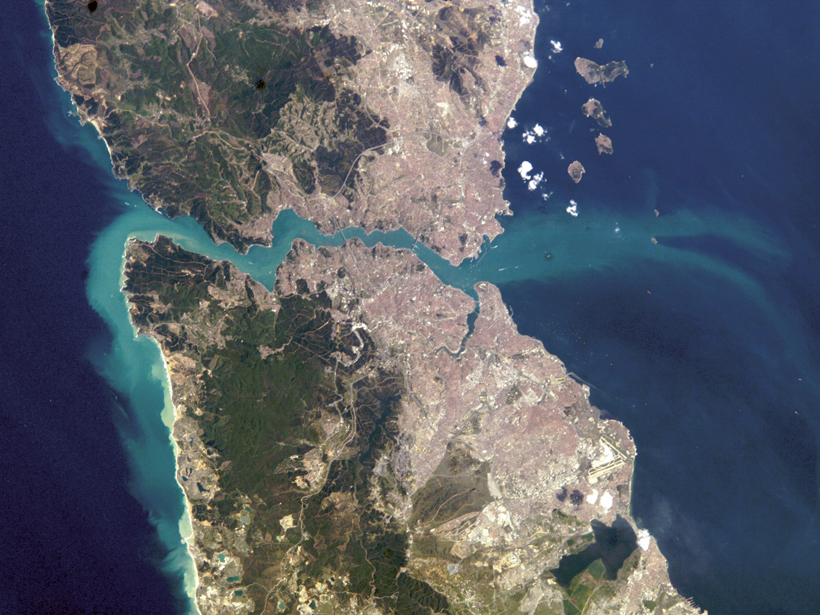A new study unearths geological evidence that corroborates historical accounts of large earthquakes along the Kura fold-thrust belt.
Black Sea
Comparing Carbon-Trapping Capacities of Anoxic Basins
Low-oxygen regions in the ocean could be prime spots for sequestering biomass—a potential strategy for fighting climate change. But each site has its pros and cons.
Marine Isotope Stage 6: First High-Resolution Field Record
A 200-year resolution record from the Black Sea for marine isotope stage 6 (130-180 ka) shows a stable geomagnetic field.
The Restless Geomagnetic Field Over the Past 70,000 Years
Detailed paleomagnetic records from Black Sea sediments reveal intricate changes in the field during geomagnetic excursions.
Big Storms Pump Mediterranean Water Far into the Black Sea
For the first time, scientists provide a sea-wide view of what happens to Mediterranean waters that flow into the Black Sea through the Bosporus Strait.
International Effort Tackles Landslide Hazards to Keep the Peace
Earth scientists work with the North Atlantic Treaty Organization to help keep a border-straddling hydroelectric power plant on the Black Sea coast safe from landslides.






